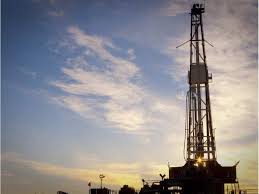OPEC Has Lost The Shale War
It's tempting to see the recent announcement that OPEC will cut production as having a positive impact on the price of oil. Taken out of the context of reality, OPEC's historical influence is huge - just the mere announcement of a production cut would send prices up.

But the reality is that OPEC has lost its war against shale producers, and is trying one last time to exert control over the market. Yes, we will see a (very) short term upward tick in the price per barrel, but any price move will not be sustainable. American oil giants are flush with cash, and eager to jump back into the game at the right price. Let's further assume that all of the OPEC member states adhere to the production cuts, except of course those that have already negotiated exemption clauses (Iran, Libya, Nigeria). Let's further assume that Russia agrees to halt production increases. As the price moves up towards $55-$60, U.S. shale producers will be incentivized to restart production. All of those capped wells will come online, in less time than it takes to sign another deal. Any price gains from the production cuts overseas will be swallowed up by the increased supply from domestic shale production. OPEC is facing a losing battle, and their only way out is to invest in more production capacity.
It's important to note that the recent discovery in the Wolfcamp shale and the expected go-live of the Kashagan field in Kazakhstan will provide additional supply. Stability in Libya and Nigeria will result in further supply. Indonesia has cleverly been removed from OPEC, so its continued production increases won't be counted. Oil that has been sitting in the ground will begin to be tapped as the price per barrel creeps upward. One also has to expect that there will be some cheating. Most of the OPEC countries require a much higher price per barrel to stabilize their economies, and it's fair to say that some will take advantage of a higher price to reap some extra cash. All of this points to a new game, where the low price producers no longer have a grip on the market. Volume will be king - if you need cash to keep your economic subsidies (and public stability) in place, you will have to produce more. Market manipulation and collusion are not long for this world, and most likely have already left the building.
There is an upside to the new normal - if we agree that production increases across the board will happen once OPEC realizes the folly of its ways, then we have to expect there to be a rush to invest. Wells will come back online, Saudi Arabia will look to drill, and Supermajors will look to tap the Wolfcamp. We can expect to see an uptick in the demand for oilfield services through the 2nd and 3rd quarters of 2017. Many of the projects that have been parked for the past two years will suddenly become strategic as producers race to be the first to take advantage of any price increases. The new U.S. administration appears to be having a positive impact on the economy as well. If that trend continues, we may expect to see a moderate increase in demand in the U.S. in the second half of 2017, though it's unlikely to have a real impact on prices.
Price predictions are notoriously inaccurate, but let's try to rationalize a price band and what it means to us. Obviously production cuts will raise the price per barrel, but as shale producers get back into the game, it will fall. It seems likely that a range of $50-$60 a barrel for the next 12 months could be expected. That price band is actually a sweet spot for producers and service providers alike. When the price of oil began to fall in 2014, most Supermajors reworked their organizations to weather a storm at $50 a barrel. Having dipped well below that, they retreated, turtle like, even more. As the price hits $50 again, they will be anxious to reinvest and return to the days when they could talk about replacement cost and not cash on hand.
Bottom line - Short term price increases followed by a race to produce and bring projects back online, resulting in a price drop. Expect a jump to $60, then a stabilization back to $50. At that point the war of volume begins, and we can only hope that world economies improve enough to start draining that pool of oversupply that we will see in the summer of 2017, otherwise will be back in the neighborhood of $20 - $30 a barrel.
| Sean Sollitto | |
| Principal |
Written by Sean Sollitto, Principal Nitor Partners
